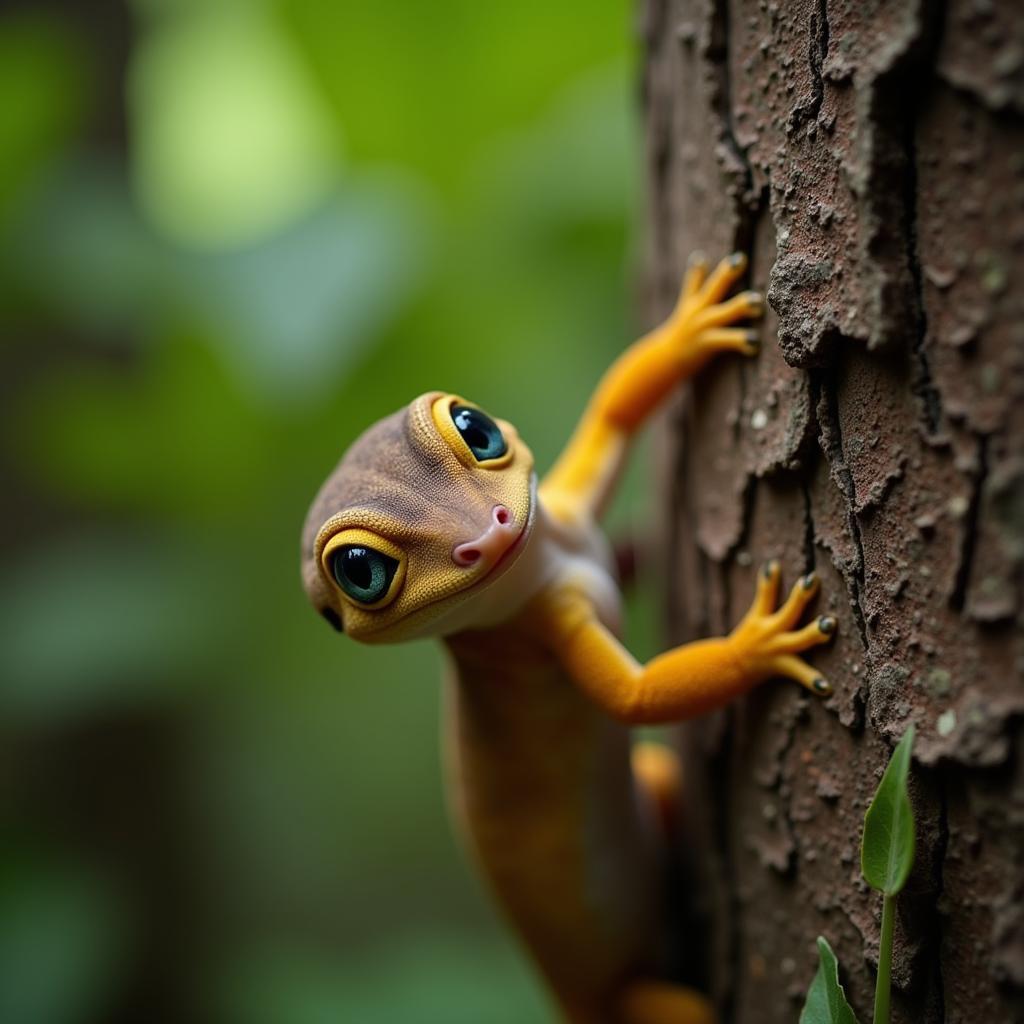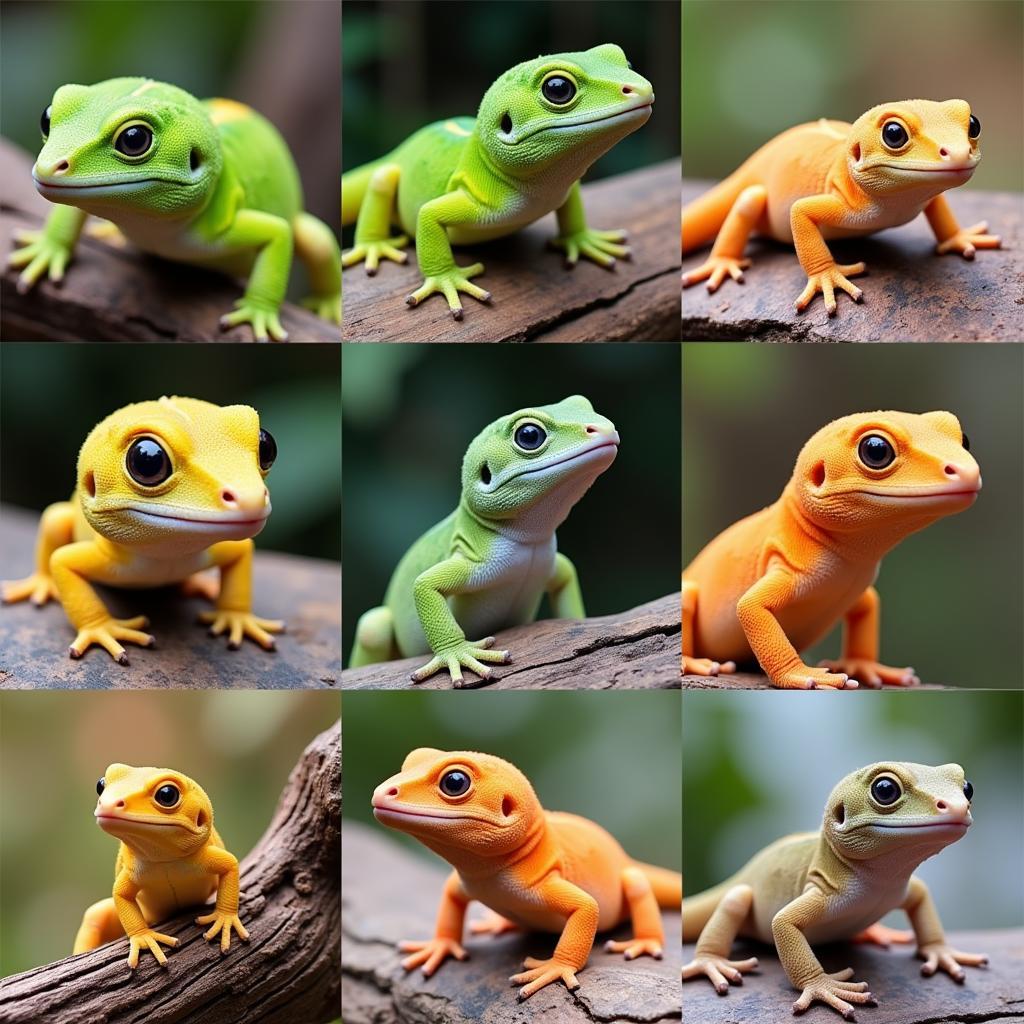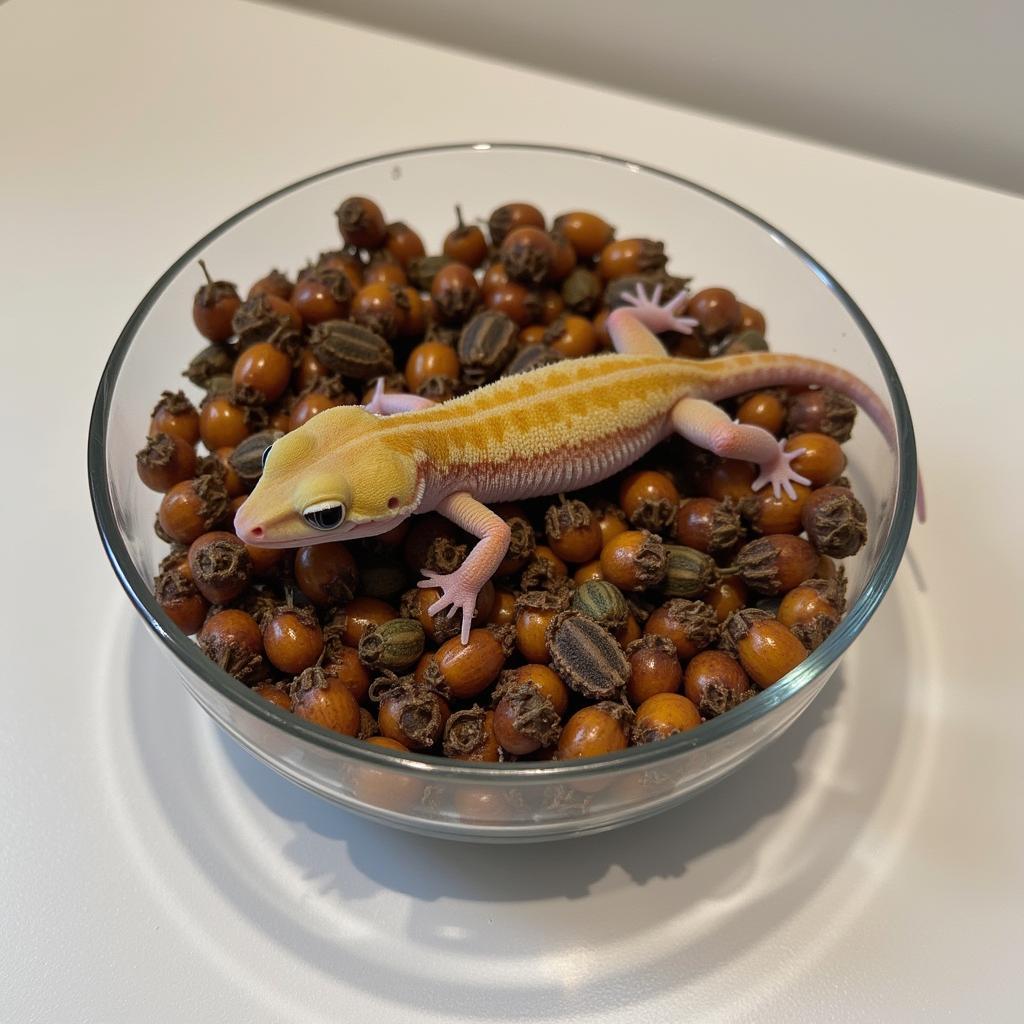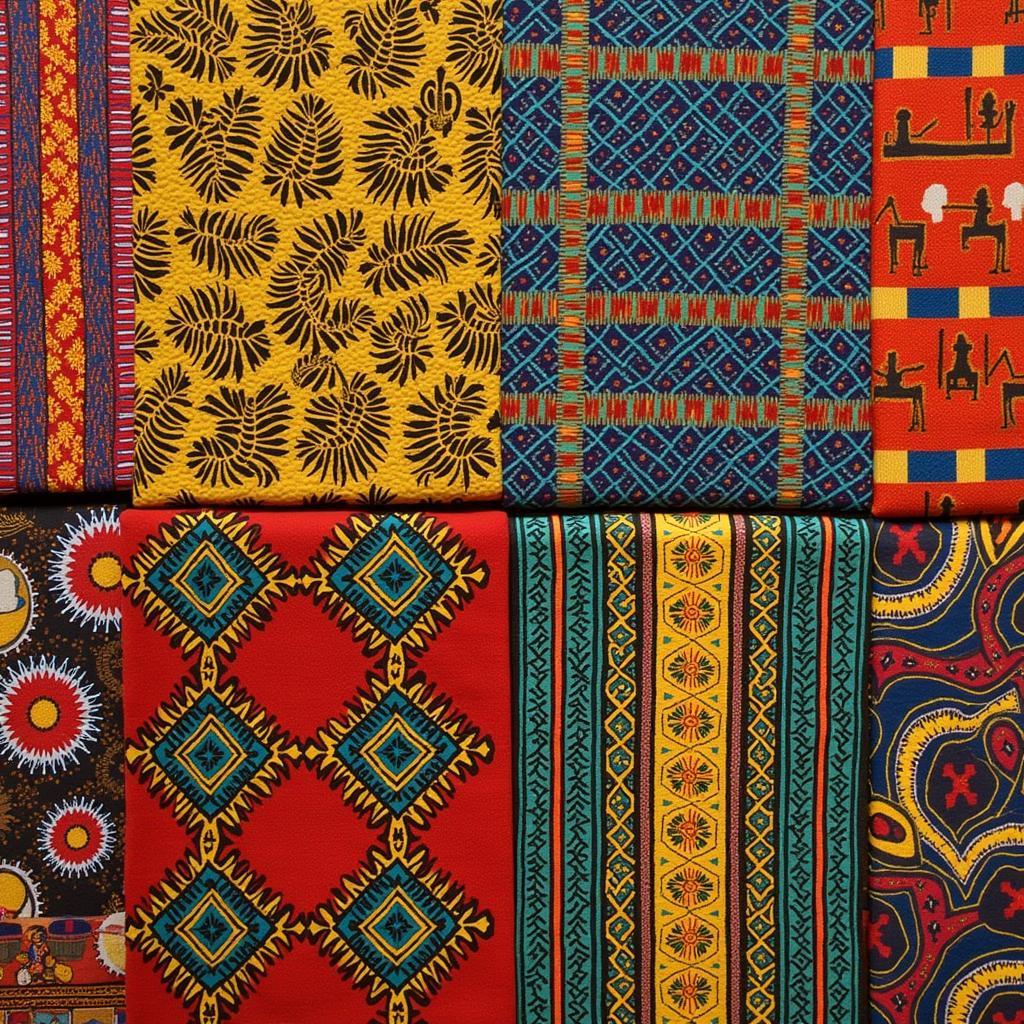The African Dwarf Gecko: A Tiny Reptile with a Big Personality
The African Dwarf Gecko, scientifically known as Lygodactylus keniensis, is a small but captivating lizard native to the eastern coast of Africa. These tiny reptiles, often measuring no more than 3 inches in length, are increasingly popular in the global pet trade due to their docile nature, striking appearance, and relatively simple care requirements. But there’s more to these miniature marvels than meets the eye. Let’s delve into the fascinating world of the African dwarf gecko and uncover what makes them such unique and rewarding companions.
Tiny Titans of the Tanzanian Terrain
 African Dwarf Gecko in Natural Habitat
African Dwarf Gecko in Natural Habitat
Hailing from the warm, humid forests of Tanzania and Kenya, African dwarf geckos are perfectly adapted to life in the trees. Their small size allows them to navigate dense foliage with ease, while their specialized toe pads, equipped with microscopic hairs called setae, grant them remarkable clinging ability, enabling them to scale even the smoothest surfaces.
These miniature reptiles are diurnal, meaning they are most active during the day. Unlike many other gecko species, African dwarf geckos possess functional eyelids, adding to their expressive and engaging nature. Their large, golden eyes provide excellent vision, allowing them to hunt their preferred prey – small insects and the sweet nectar of fruits.
A Kaleidoscope of Colors
One of the most captivating aspects of the African dwarf gecko is its stunning array of colors and patterns. While coloration can vary depending on factors like age, sex, and geographic location, these geckos are known for their vibrant hues.
 African Dwarf Gecko Color Morphs
African Dwarf Gecko Color Morphs
Males often sport vibrant shades of green, yellow, or orange, accented by striking black markings. Females, on the other hand, tend to be more subdued in coloration, with shades of brown or gray providing effective camouflage against predators.
Creating a Home for Your Miniature Marvel
Providing a suitable habitat is crucial for the well-being of your African dwarf gecko. A vertically oriented terrarium, mimicking their arboreal lifestyle, is ideal. Furnish the enclosure with branches, vines, and live plants to create a stimulating and enriching environment.
Maintaining appropriate temperature and humidity levels is vital. A basking spot reaching around 85°F (29°C) is necessary, while the rest of the enclosure should maintain a gradient down to 75°F (24°C). Humidity levels should be kept between 60% and 80%, which can be achieved through regular misting and a substrate that retains moisture well.
A Diet of Delightful Delicacies
African dwarf geckos are insectivores, meaning their diet consists primarily of insects. A variety of small, gut-loaded insects such as fruit flies, pinhead crickets, and small mealworms should be offered several times a week. Dusting these insects with a calcium and vitamin D3 supplement is essential for ensuring proper bone health.
 Feeding an African Dwarf Gecko
Feeding an African Dwarf Gecko
In addition to insects, these geckos also enjoy sweet treats. A commercially prepared gecko fruit mix or a small amount of mashed fruit, such as mango or papaya, can be offered as a supplemental food source.
A Rewarding Companion for the Reptile Enthusiast
While their diminutive size might suggest fragility, African dwarf geckos are surprisingly hardy and adaptable reptiles. With proper care and attention, these charming creatures can live for 5-10 years, bringing joy and fascination to their keepers. Their docile nature, vibrant colors, and relatively simple care requirements make them an excellent choice for both novice and experienced reptile enthusiasts alike.
Frequently Asked Questions about African Dwarf Geckos
1. Can African dwarf geckos be housed together?
While it’s possible to house females together, males can be territorial and should be kept solitary. Introducing geckos from different terrariums should be done cautiously and only after a quarantine period.
2. How can I tell if my African dwarf gecko is male or female?
Males typically display more vibrant colors and have a noticeable bulge at the base of their tail where their hemipenes are located. Females lack this bulge and tend to have more subdued coloration.
3. What is the best substrate for an African dwarf gecko terrarium?
A bioactive substrate, consisting of a mix of soil, leaf litter, and beneficial microorganisms, is ideal as it helps maintain humidity levels and provides a natural environment for the gecko.
4. Do African dwarf geckos require UVB lighting?
While not strictly necessary, providing low-level UVB lighting can be beneficial for their overall health and well-being, promoting vitamin D3 synthesis and aiding in natural behaviors.
5. How often should I clean my African dwarf gecko’s terrarium?
Spot cleaning should be done daily to remove any waste or uneaten food. A more thorough cleaning, replacing the substrate and disinfecting the enclosure, should be done every 2-3 months.
Need Help with Your African Dwarf Gecko?
For all your African Dwarf Gecko needs, contact us at +255768904061, email us at kaka.mag@gmail.com, or visit us at Mbarali DC Mawindi, Kangaga, Tanzania. Our team is available 24/7 to assist you.
